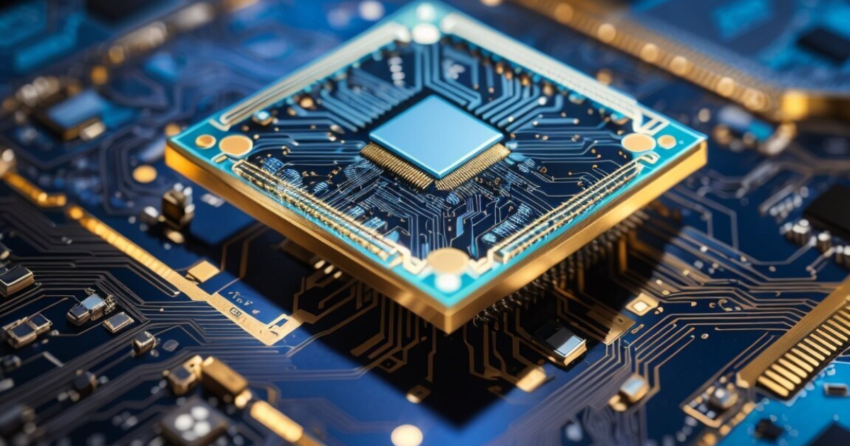With the rapid advancements in artificial intelligence (AI) and computing technology, neuromorphic computing processors have emerged as a revolutionary approach to processing information. These processors are inspired by the human brain’s neural architecture, enabling efficient, low-power, and highly parallel computing.
This article explores what neuromorphic computing processors are, how they work, their benefits, challenges, applications, and future potential.
What Are Neuromorphic Computing Processors?
Neuromorphic computing processors are specialized computer chips designed to mimic the structure and functionality of biological neural networks found in the human brain. Unlike traditional processors that rely on sequential processing, neuromorphic processors operate through parallel, event-driven computations, making them highly efficient for AI and machine learning tasks.
Key Features of Neuromorphic Processors
- Brain-Inspired Architecture – Uses artificial neurons and synapses to simulate biological computation.
- Low Power Consumption – Operates efficiently with minimal energy requirements.
- Real-Time Processing – Processes data asynchronously, similar to how neurons transmit signals.
- Adaptive Learning – Supports self-learning and pattern recognition through synaptic plasticity.
- Highly Parallel Computing – Capable of processing multiple tasks simultaneously.
How Do Neuromorphic Computing Processors Work?
Neuromorphic processors are fundamentally different from conventional CPUs and GPUs. Here’s how they function:
1. Artificial Neurons and Synapses
Neuromorphic chips consist of artificial neurons and synapses that communicate using spiking neural networks (SNNs). These artificial neurons process and transmit information through electrical spikes, much like biological neurons in the brain.
2. Event-Driven Computation
Instead of continuously processing information, neuromorphic chips operate on an event-driven model, meaning that they only perform computations when there is an input stimulus. This greatly reduces energy consumption.
3. Parallel Processing
Neuromorphic chips can perform multiple computations simultaneously, leveraging massively parallel architectures to handle complex tasks efficiently.
4. Synaptic Plasticity and Learning
Neuromorphic systems can adapt and modify their connections over time, similar to how synapses in the human brain strengthen or weaken based on experience. This enables real-time learning and adaptation.
5. Analog and Digital Integration
Some neuromorphic processors use analog computing elements, which further enhance energy efficiency by mimicking the brain’s continuous signal processing rather than relying solely on binary digital logic.
Benefits of Neuromorphic Computing Processors
1. Energy Efficiency
By mimicking brain-like processing, neuromorphic chips consume significantly less power compared to traditional computing architectures.
2. High-Speed Processing

Neuromorphic processors can process data in real time with minimal latency, making them ideal for AI-driven applications such as robotics and autonomous vehicles.
3. Improved Machine Learning Capabilities
Neuromorphic chips enable efficient pattern recognition, natural language processing, and adaptive learning in AI models.
4. Scalability
These processors support large-scale parallel computing, making them suitable for complex computational tasks.
5. Reduced Data Bottlenecks
By processing data in a decentralized manner, neuromorphic computing minimizes the need for frequent data transfers between memory and processing units.
Challenges of Neuromorphic Computing Processors
1. Limited Software Support
Neuromorphic processors require specialized programming models, making software development challenging.
2. Hardware Complexity
Building neuromorphic chips with millions of artificial neurons and synapses is technically complex and expensive.
3. Integration with Existing Systems
Current computing infrastructures are designed for traditional CPUs and GPUs, making it difficult to integrate neuromorphic processors seamlessly.
4. Standardization Issues
There are no widely accepted standards for neuromorphic computing, leading to inconsistencies in design and implementation.
5. Training and Optimization Challenges
Neuromorphic networks require new training techniques that differ from conventional deep learning models.
Applications of Neuromorphic Computing Processors
1. Artificial Intelligence and Machine Learning

Neuromorphic chips are highly effective for AI-driven tasks, such as image recognition, speech processing, and autonomous decision-making.
2. Robotics and Automation
Robots equipped with neuromorphic processors can perform real-time sensory processing and adaptive learning, improving efficiency and autonomy.
3. Brain-Computer Interfaces (BCI)
Neuromorphic computing enhances BCI technologies, enabling direct communication between the brain and external devices.
4. Internet of Things (IoT) Devices
Neuromorphic chips bring energy-efficient intelligence to IoT devices, allowing smart sensors to process data locally instead of relying on cloud computing.
5. Cybersecurity and Anomaly Detection
These processors are useful in identifying unusual patterns in network traffic, improving security measures in real-time applications.
6. Healthcare and Biomedical Applications
Neuromorphic systems assist in medical diagnostics, drug discovery, and neural prosthetics by mimicking brain-like processing.
The Future of Neuromorphic Computing Processors
Neuromorphic computing is still in its early stages, but rapid advancements indicate a promising future. Key developments to watch for include:
1. Better Software and Programming Frameworks
Researchers are working on user-friendly programming tools to make neuromorphic computing more accessible to developers.
2. More Scalable Architectures
Future neuromorphic processors will feature millions to billions of artificial neurons, significantly improving computational power.
3. Integration with AI and Quantum Computing
Neuromorphic chips could work alongside quantum computers to solve highly complex problems efficiently.
4. Widespread Adoption in Edge Computing
Neuromorphic processors will play a key role in edge AI, enabling real-time data processing in autonomous systems, drones, and smart cities.
5. Improved Neuromorphic Hardware Efficiency
Developments in memristors and analog computing elements will enhance the performance and efficiency of neuromorphic processors.
Also Read: What Are Biodegradable Electronics And How Do They Work?
Conclusion
Neuromorphic computing processors represent a major shift in computing technology, offering brain-inspired, energy-efficient, and highly parallel processing capabilities. While there are challenges related to software development, integration, and standardization, ongoing research is paving the way for broader adoption.
As AI, IoT, and robotics continue to evolve, neuromorphic computing will play a crucial role in shaping the future of intelligent systems, making computing more efficient, adaptive, and capable of handling complex real-world problems.
FAQs
1. What is neuromorphic computing?
Neuromorphic computing is an approach to designing processors that mimic the neural structure and function of the human brain for efficient and adaptive computing.
2. How do neuromorphic processors differ from traditional processors?
Unlike traditional CPUs and GPUs, neuromorphic processors operate through parallel, event-driven computations, making them more energy-efficient and capable of real-time learning.
3. What are some examples of neuromorphic chips?
Notable examples include IBM’s TrueNorth, Intel’s Loihi, and SpiNNaker developed at the University of Manchester.
4. What are the advantages of neuromorphic computing?
Neuromorphic processors offer low power consumption, real-time processing, adaptive learning, and high parallelism, making them ideal for AI and IoT applications.
5. Is neuromorphic computing the future of AI?
Neuromorphic computing is expected to complement AI by enabling more efficient and brain-like processing, but it will likely be used alongside other technologies like quantum computing rather than replacing traditional computing methods entirely.

